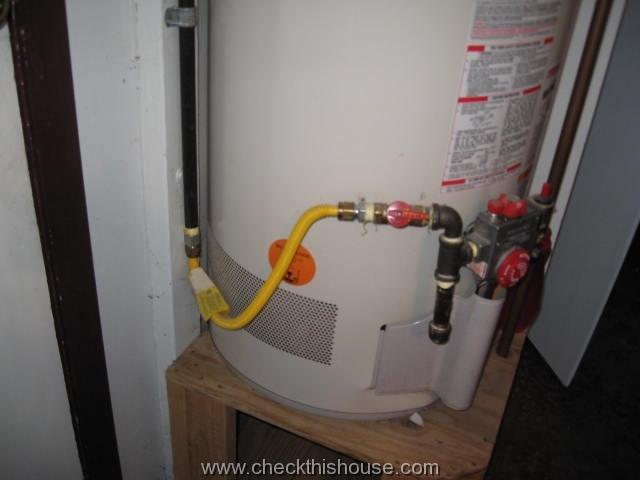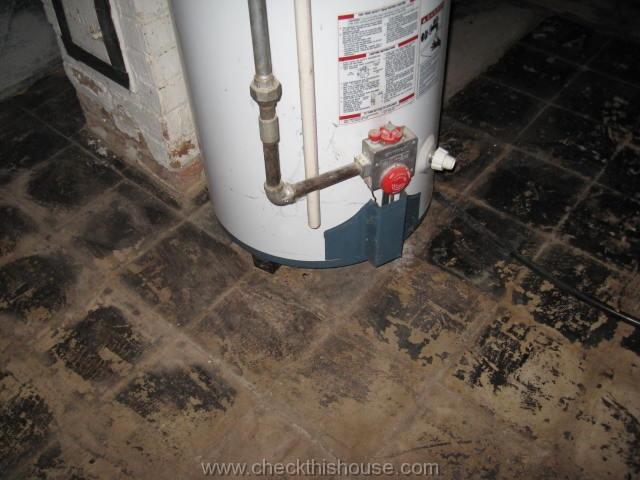Water Heater Gas Connectors & Flexible Gas Water Heater Connectors
If you are planning to use CSST tubing as a water heater gas connector, make sure that you consult this installation with your local code enforcement division, and if approved, have a certified contractor perform this work.
Illinois remained very conservative, as far as water heater gas connector type (or any other permanently installed appliance gas connection), which used to be black steel pipe only.
However, according to Peoples Gas / Nicor website “Updated Construction Guide” (just fill-up the pup-up from and you’ll be able to open it) the use of CSST – corrugated stainless steel tubing, as a final gas connection for permanently installed appliances, such as water heaters, furnaces and boilers is now permitted.
If you are planning to use CSST tubing as a water heater gas connector, make sure that you consult this installation with your local code enforcement division, and if approved, have a certified contractor perform this work. Because water heater CSST type connector installation is still rare in our state, I’ll explain a couple of most common violations associated with water heater gas connector installation.
Check this important post – Tank gas water heater maintenance
Flexible water heater gas connector
Appliance type flexible water heater gas connector is not a permitted type of installation in Illinois. Often, when replacing water heater, its dimensions are slightly different from the previous one, and old gas piping has to be altered, so it matches new connections.
The easiest way is to eliminate old steel pipe used as water heater gas connector and install an appliance type flexible connector. Unfortunately, if you’ll have a gas company employee visiting your house, and he’ll notice this installation, you might get a violation ticket and have a gas turned off until proper connection is established.
Drip leg / sediment trap is a required component of the water heater gas connector. Its a short piece of a pipe with a cap on the bottom visible on first image to the left (attached to the bottom of a ‘”T” connector).
Water heater gas connector / supply line drip leg is intended to capture any condensed water that may have been transported with gas, and shall be installed as close to the inlet of the water heater as practical (not required on illuminating appliances, ranges, clothes dryers, gas fireplaces and outdoor grills).






I never imagined that flexible gas hoses are illegal in some areas as they are often very convenient to use, especially when the two connections are not properly aligned. I guess safety is very important and it’s best not to compromise.
Greetings,
Not sure about the Great State of Illinois, Just seeing the picture its installed improper.
I’m looking to figure out.. The flex in the picture is a appliance connector, csst would have different fittings.Can
the fitting for the csst piping can be taken apart, but I’m trying to figure out, is it to be used to bleed the gas line ? and if so how many times can it be taken apart before the rings[if equipped] do not reseal. Its seems that this would not be a good practice , so if one would have hard pipe -valve then appliance connector ,I can see that no union would be needed.
However with the csst [track piping]. if you where extending house lines to the appliance hard pipe -valve -csst then union?
or is it not needed? Your opinion would be appreciated. Thanks jTracy
Hello again,
The CSST TracPipe manufacturer allows up to 3 fitting re-attachments. You can find details on page 29 of this manual – http://www.omegaflex.com/trac/technical/111743_Omega_Flex.pdf under paragraph # 3. REASSEMBLY
…If the fitting is reattached more than three times, or if the nut cannot be pulled over the rings in any position, then the split-rings must be replaced.…
So the above answers your question about re-connecting / reusing the fitting. And the union… if you think that for some reason the pipe will have to be taken apart more than 3 times, convenient configuration would be: a shutoff valve at the manifold or heavy wall pipe end, followed by a nipple – union – nipple – CSST pipe – WH regulator. That way you can take it apart without touching CSST pipe fittings.
Don’t forget that the TracPipe® gas piping material (CSSTCorrugated Stainless Steel Tubing ) must only be installed by a qualified person who has been trained or otherwise qualified through the TracPipe Gas Piping Installation Program.
Looking at the 1st picture csst to valve -drip and control. how do you control the gas if you where to change out the control and or the water heater?? you could purge the gas line at the drip.., however i think the manufacture calls for a valve and union at that point. thanks
Hello Joseph,
The gas shutoff valve from the 1st picture should be on the other side of that not permitted in IL flexible gas connector – between the heavy wall pipe and the flexible / not the flexible-valve-gas controller, assuming that CSST is used as a final WH connection, and that it is permitted in your area. The union is not required in such configuration because each end of the flexible connector allows for easy removal / separation of the gas line. However, your local building department and the manufacturer might have a different view, with the union, you’d have 3 movable parts to turn and block at the same time in order to separate them – two sections of the union connector and the flexible gas connector end.
If you have small kids, it would be safer to extend heavy wall gas pipe slightly higher and make that flexible connection at the level difficult for them to reach… something to consider.
Let me know if I can help you with anything else.